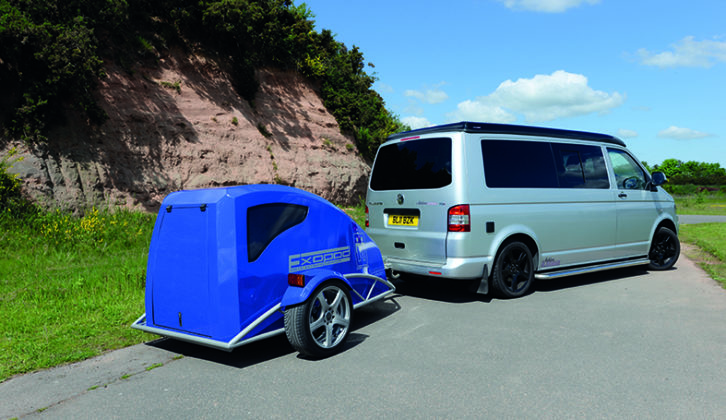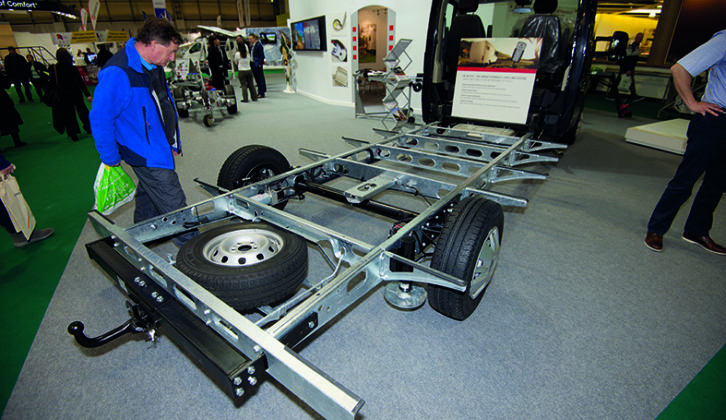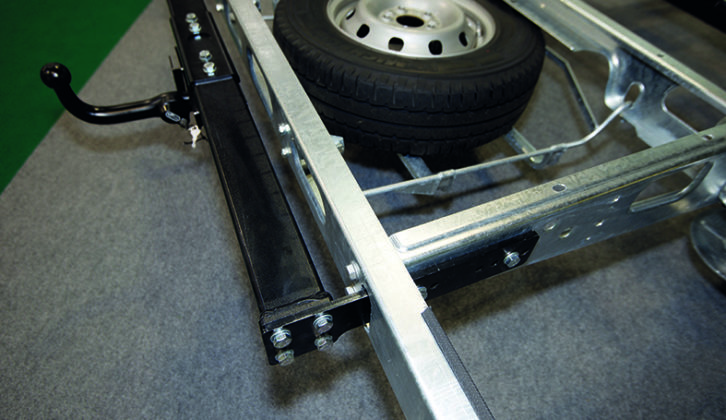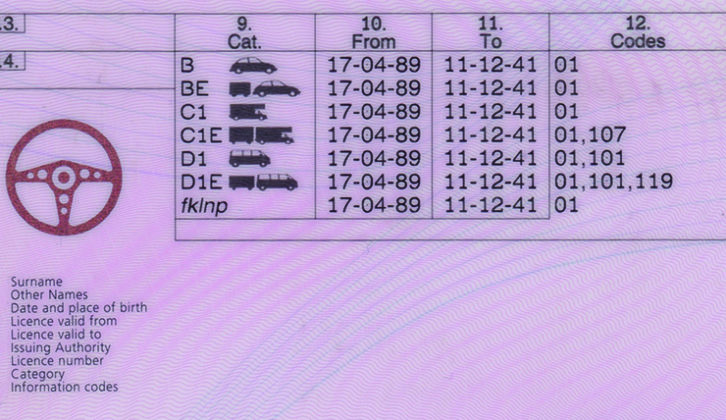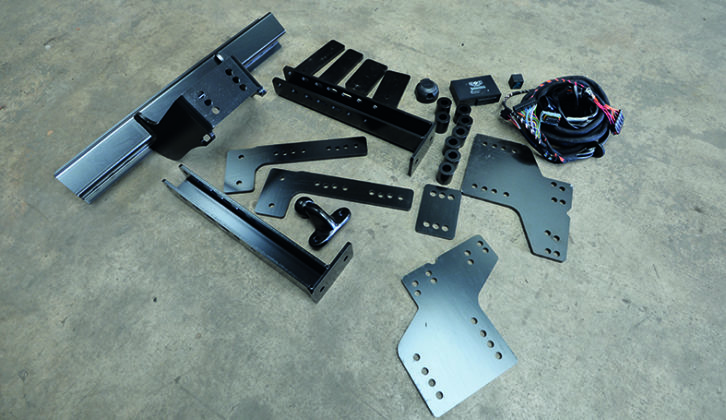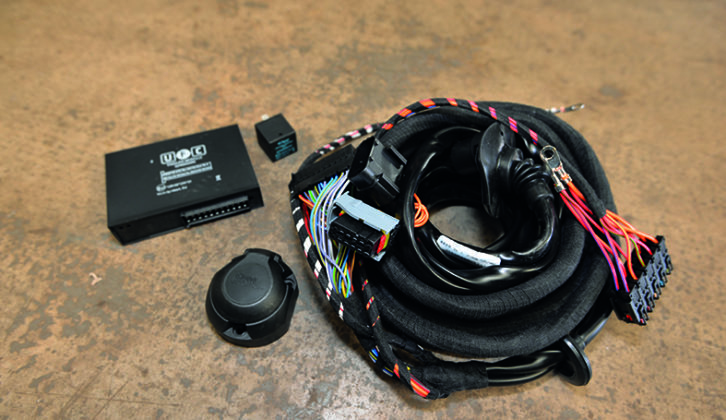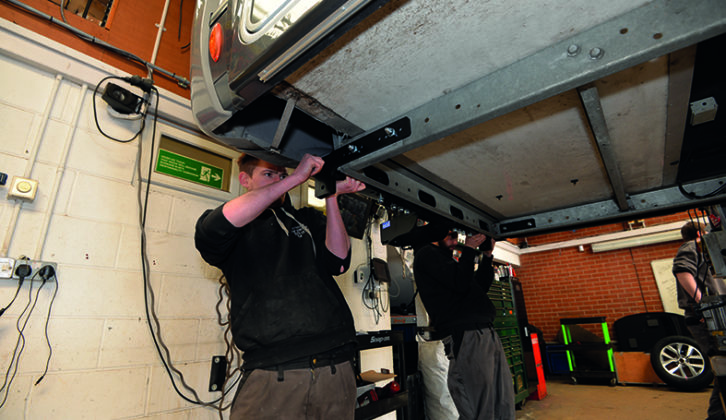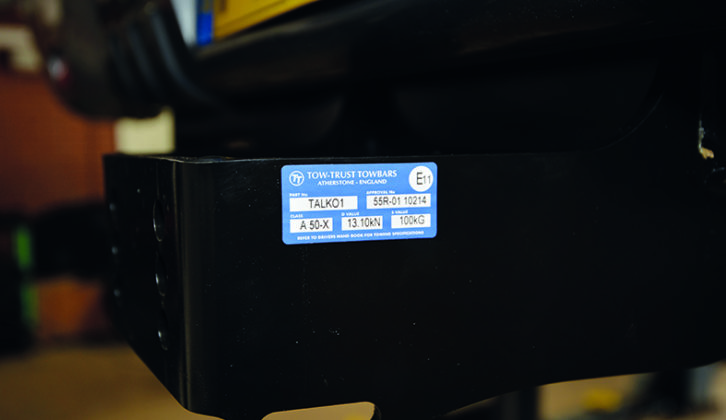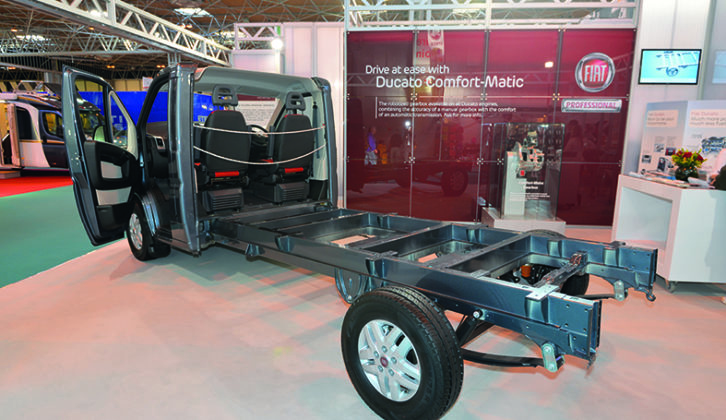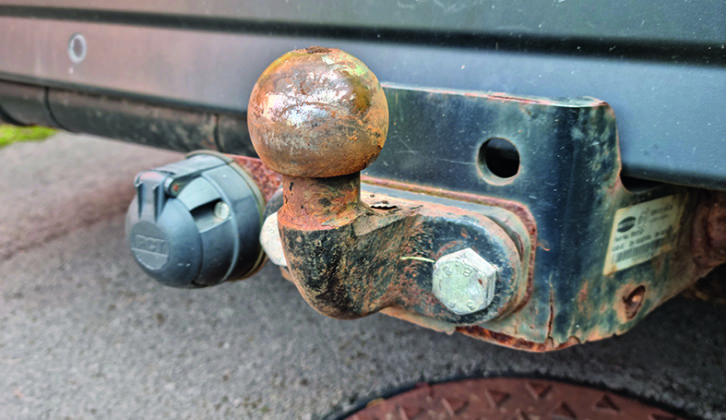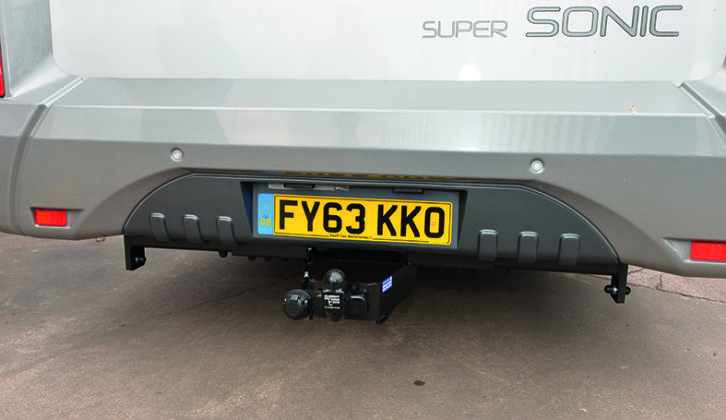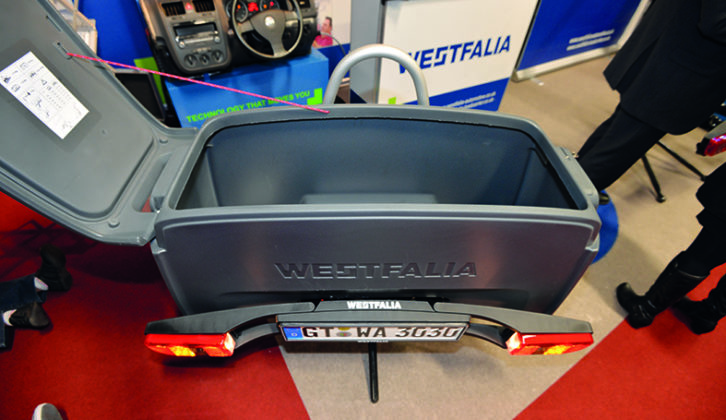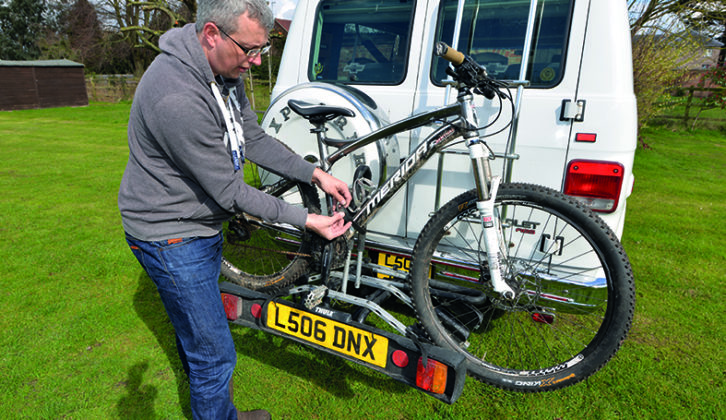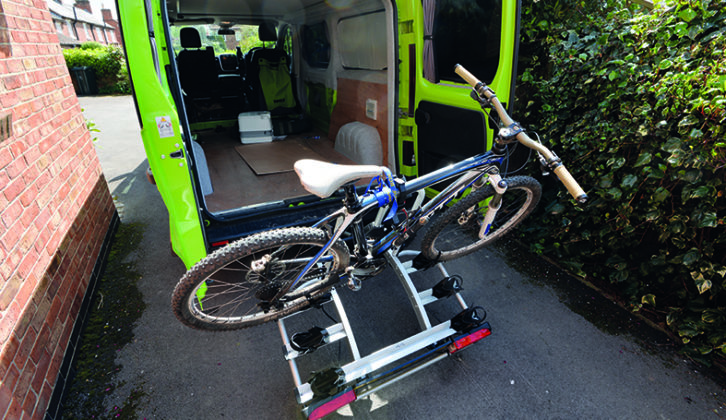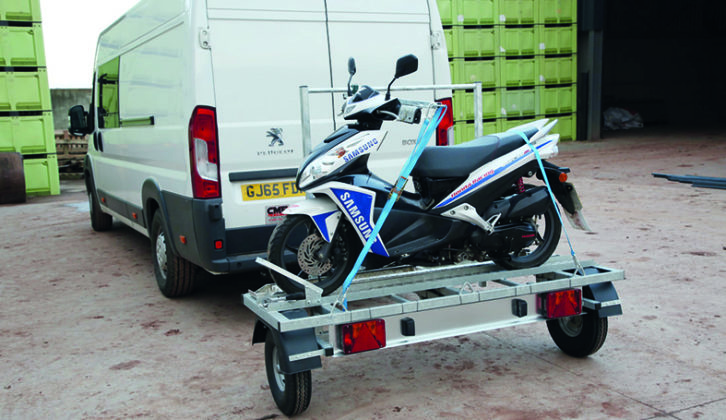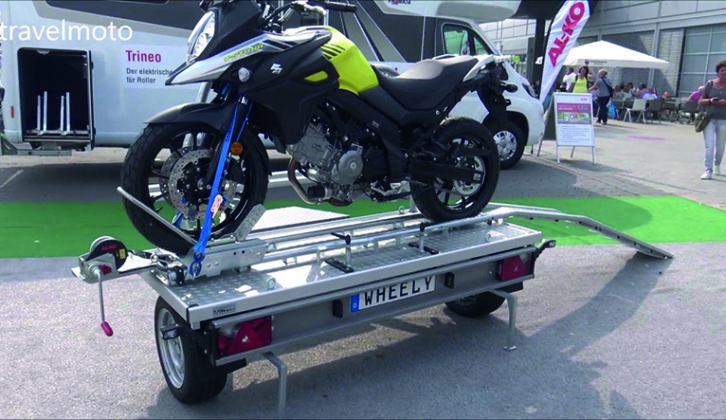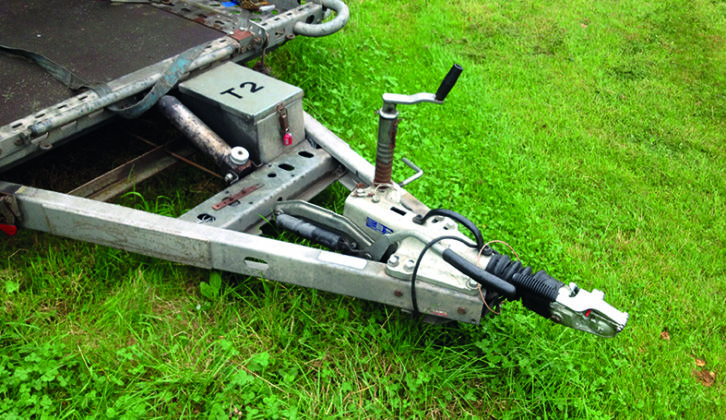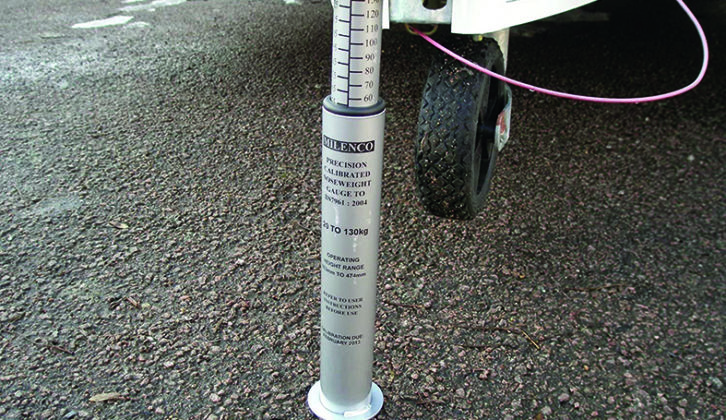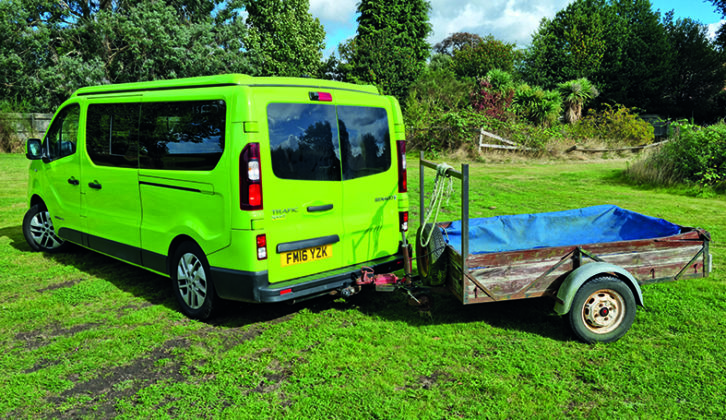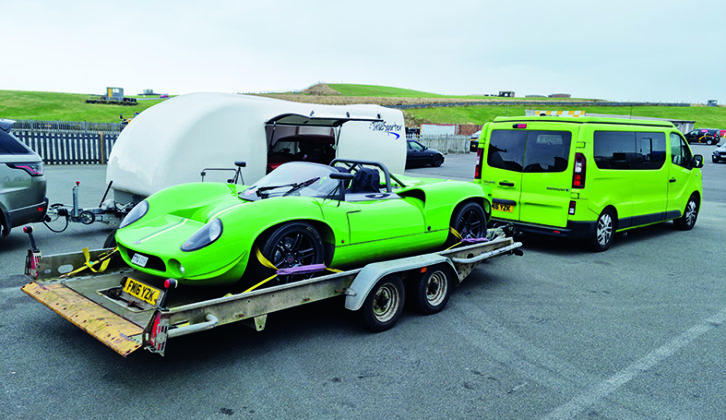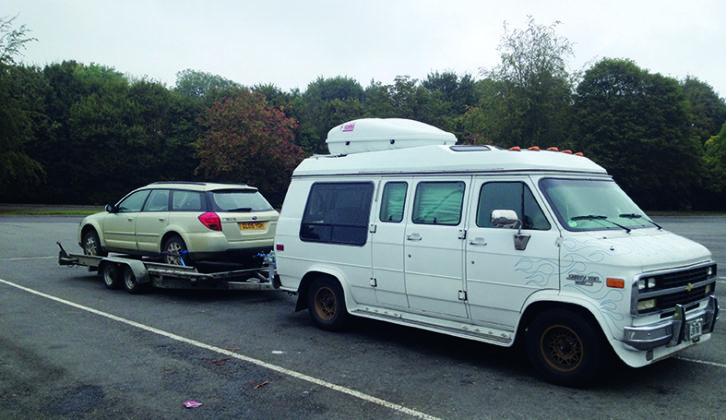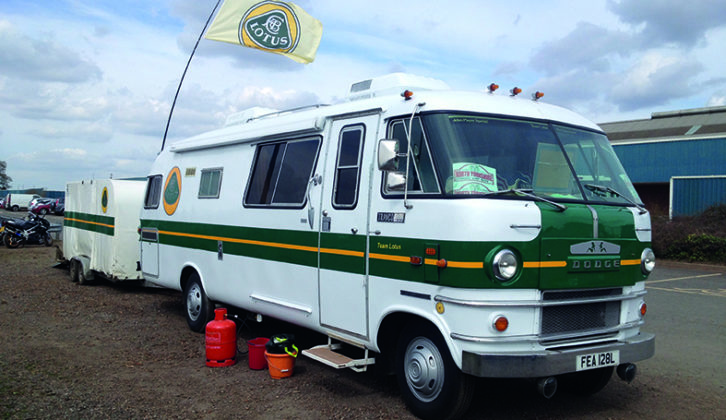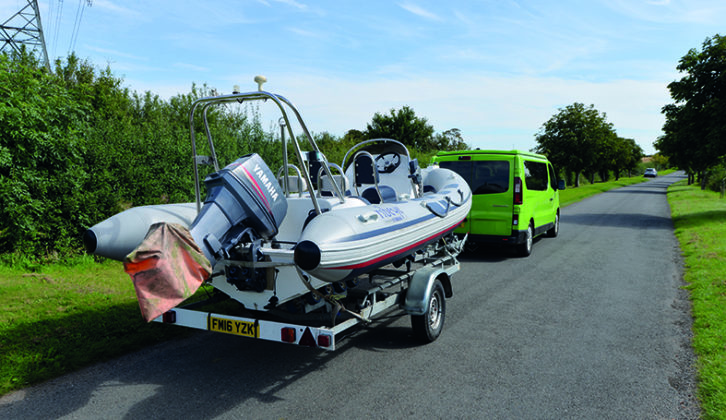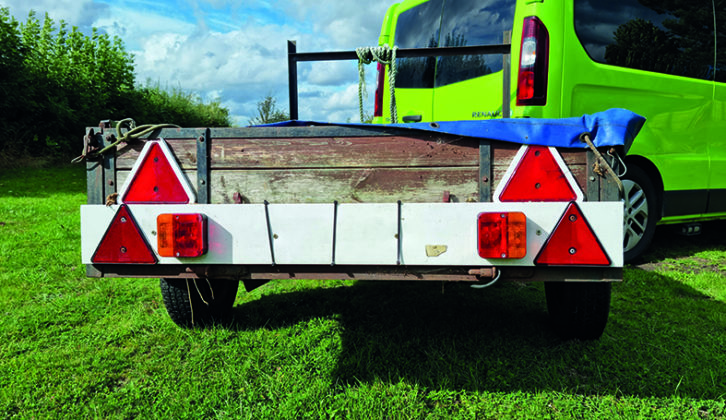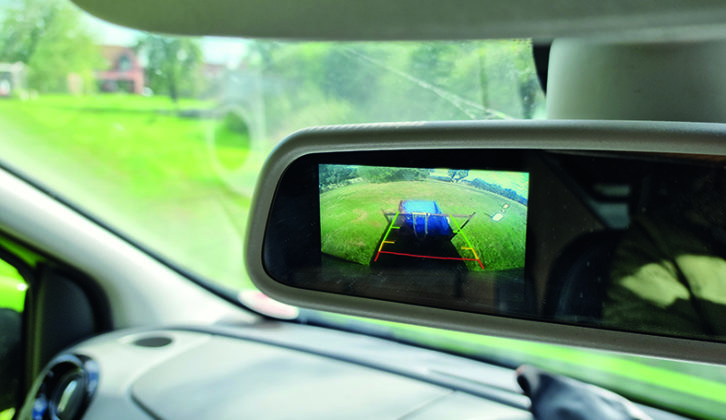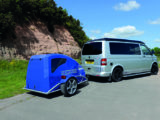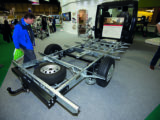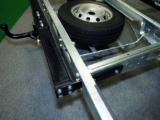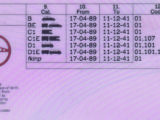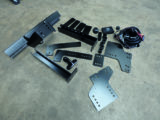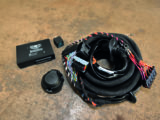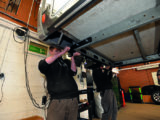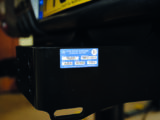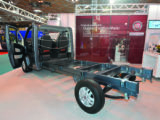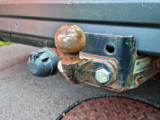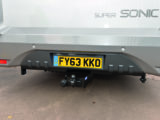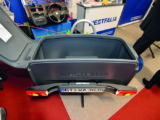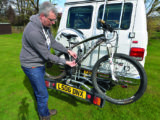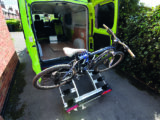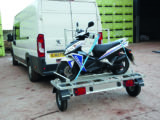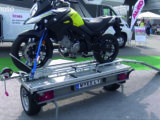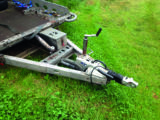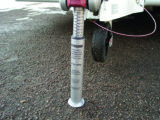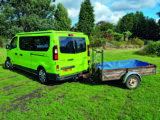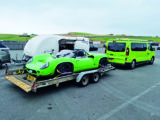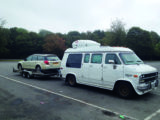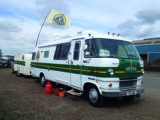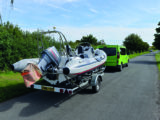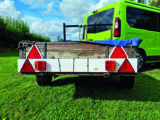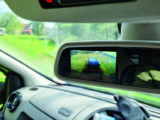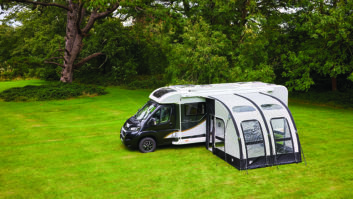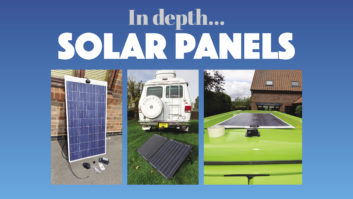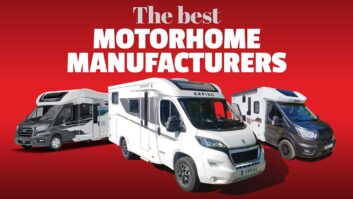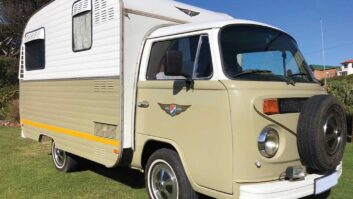Thanks to the shortage of lorry drivers, the Government has scrapped towing tests, to free up HGV testing capacity. This means that no matter when you passed your driving test, you’re eligible to tow a trailer without additional training. The weight of trailer you can tow depends on when you passed your test – but we’ll come to that later.
Why tow at all?
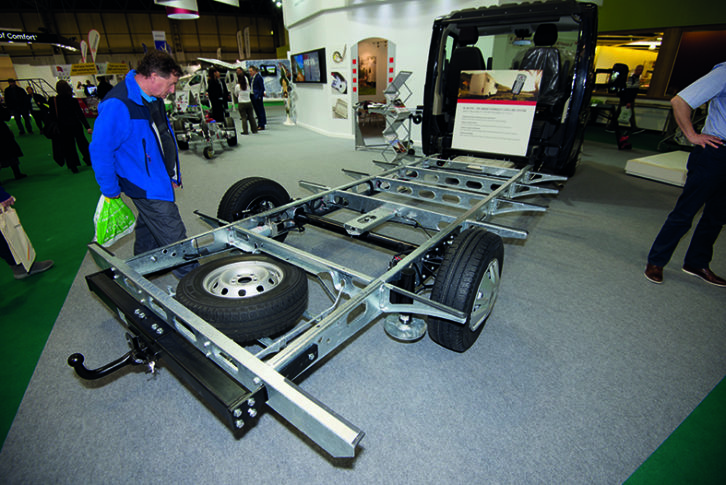
A towbar is one of the most flexible additions you can bolt onto your motorhome – think of it as a universal attachment point for a variety of extra toys. Whether you want to increase storage space, reduce your payload, or tow an additional vehicle, a towbar is a great way to go about it.
The majority of motorhomes can have a towbar fitted, but the type you need depends on when your vehicle was registered. If your ‘van was registered before April 2012 (that is, it has a registration plate of ’61’ or older), ir doesn’t need to be fitted with a type-approved towbar.
If it was registered after April 2012 (it has a ’12’ registration plate or newer), your vehicle must be fitted with a type-approved towbar for all towing applications, but can have a non-approved towbar to support a rack for a bike, motorcycle or scooter.
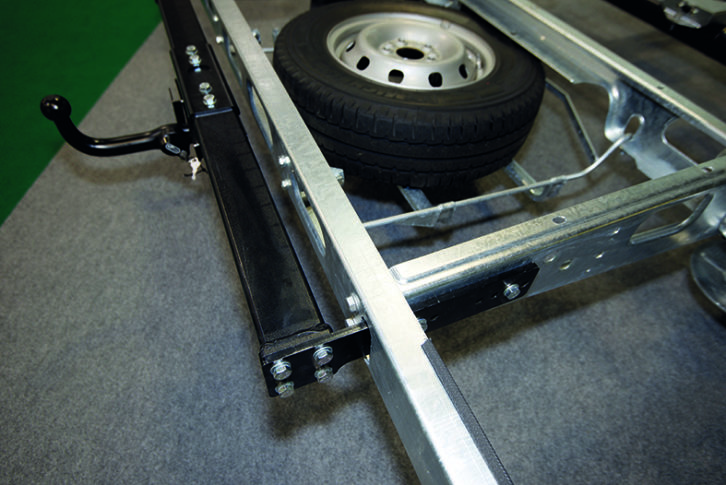
If you have the option for a vehicle registered after April 2012, it’s wisest to fit a type-approved towbar, in case a future owner wants to use it for towing.
Motorhomes with a large rear overhang
Most ‘vans are suitable for a towbar, except those that have a large rear overhang and no rear chassis support framework. In some cases, additional chassis bracing can be welded or bolted in, but this isn’t always the case – it depends on the available payload. Firms such as SyTech can increase plated chassis weights, although this can have a knock-on effect to licensing if it exceeds the 3500kg MAM, and might limit who can drive the vehicle.
So for any motorhome that you’re considering fitting with a towbar, your first port of call needs to be to your local towbar specialist or leisure vehicle dealers, to see what can be fitted to your ‘van.
Licence codes and trailer weights
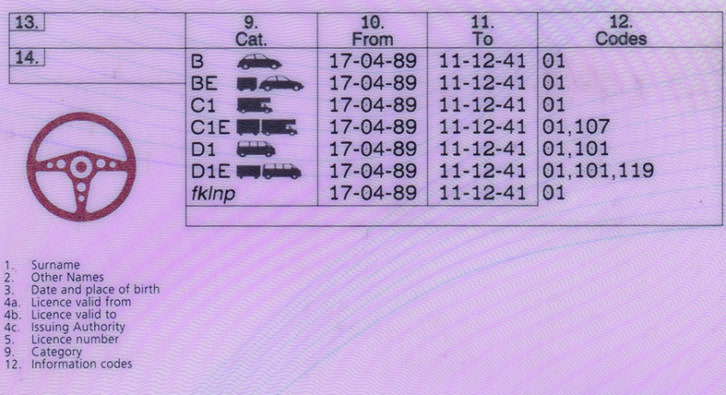
Under the recent rule changes, no matter when you passed your driving test, you’re automatically given categories BE on your driving licence. This allows you to drive a vehicle with a MAM of up to 3500kg with a trailer. If you passed before 19 January 2013, you can tow any size of trailer. If you passed after 19 January 2013 you can tow a trailer with a MAM of up to 3500kg.
If you passed your test before 1 January 1997, the towing limits are higher and you can technically tow a motorhome and trailer combination up to a total MAM of 8250kg.
Trailer weight means the total weight of both the trailer and the load on it. So if you want to tow a car weighing 1200kg on an 800kg trailer, the trailer weight is 2000kg.
The BE licence category allows you to drive motorhomes up to 3500kg MAM, but for heavier vehicles, you’ll still need category C1 on your licence. This allows you to drive vehicles between 3500kg and 7500kg with a trailer of up to 750kg. If you want to tow a heavier trailer, you need licence code C1E, which allows you to drive a motorhome of between 3500kg and 7500kg MAM , with a heavier trailer. Under C1E, the combined weight of trailer and motorhome can’t exceed 12000kg, but this depends on your licence code – if you have code ‘107’ on your licence, this limits the combined total of motorhome and trailer to 8250kg.
Most motorhome manufacturers try very hard to make motorhomes sit in the 3500kg MAM range, to enable more drivers to drive them, and maximise sales. This is because after the age of 70, you need to renew your licence every three years and the C1 category often requires a medical form to be filled out. So ‘vans heavier than 3500kg necessitate more paperwork for the over-70s.
For most people, a 3500kg motorhome with a combined towing weight of up to 8250kg is fine – even the heaviest cars rarely top 3000kg in weight, with most smaller tow cars being 1500kg to 2000kg.
What can your motorhome tow?
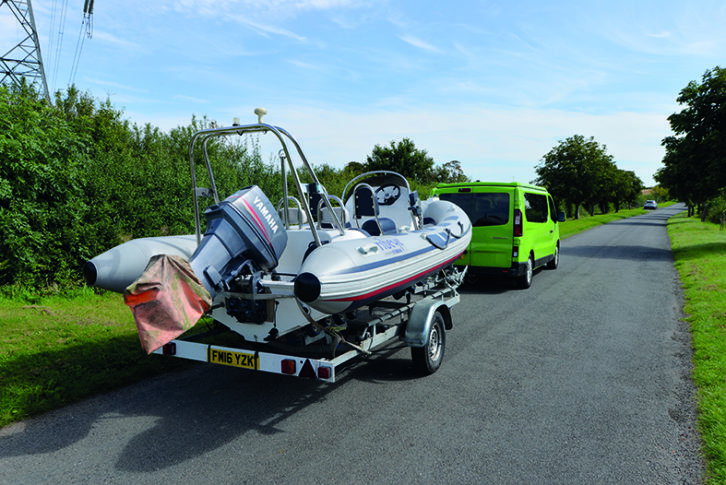
So what weight can your motorhome tow? Well, that depends on the manufacturer. It is typically around 2000kg, but might be higher or lower, depending on the bodywork design. You usually find panel van conversions have a higher towing limit than coachbuilt and A-class models, but it does vary, depending on the chassis – check your handbook, or refer to the manufacturer.
Trailer types
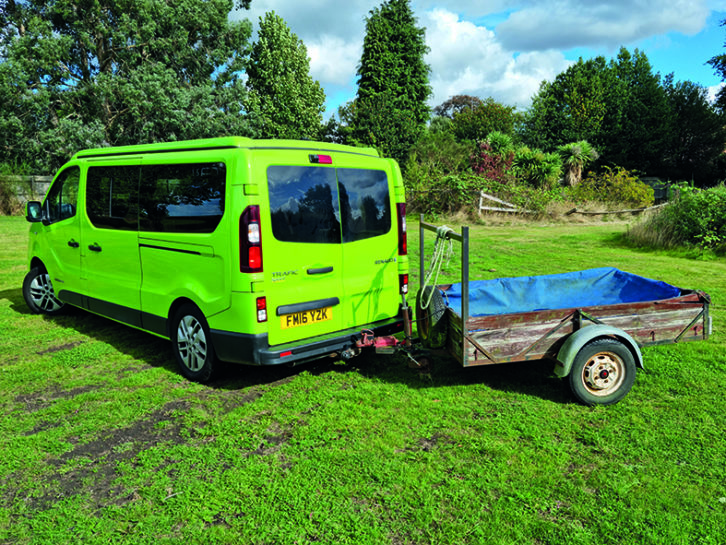
These days you can buy a trailer to suit any hobby. So whether you go hang-gliding or canoeing, you can bet there’s a purpose-built trailer to suit! The most common types for motorhomes, though, are the all-purpose box trailer and vehicle trailers.
Box trailers come in all shapes and sizes, but the key is wheel size. For local trips, small-wheeled box trailers are fine, but for longer journeys or extensive trips abroad, they can be troublesome – the smaller wheels rotate faster and can have more issues with bearing and tyre wear. Avoid 8in-wheeled models for longer trips – look for wheels above 12in in diameter. Always carry a spare wheel for the trailer (ideally covered to reduce UV damage) and make sure to check the pressure regularly.
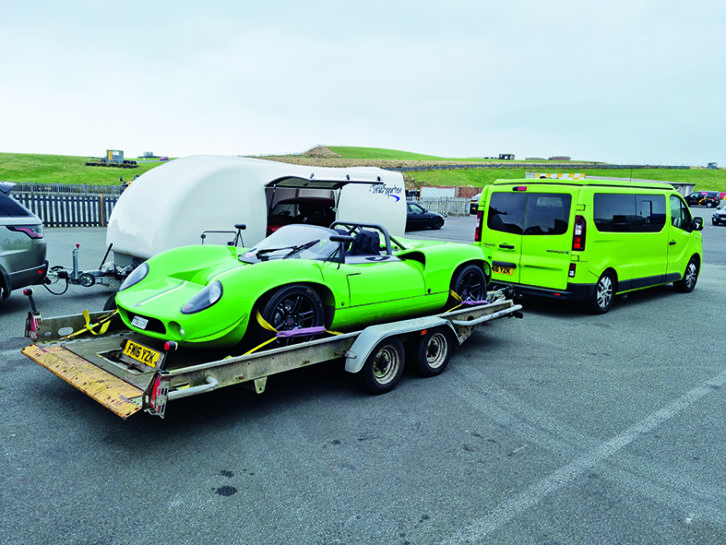
Motorbike and car trailers tend to be fitted with more durable wheels as standard, and come in all shapes and sizes to suit the vehicle you’re carrying. The key thing to look for is that the trailer has a load rating suitable for the vehicle you’re carrying, and is sized to suit it and no larger than you need. The higher the weight limit of a trailer, the heavier and more cumbersome it will be.
Twin-axle trailers are generally preferable for towing a medium-sized car (for example, a Golf) because they are far more stable than single-axle trailers, but for smaller cars (such as a Smart car), a single-axle model works fine.
Never unhitch a car trailer with the vehicle on it – you won’t be able to move it – and with empty twin-axle models, it’s best to wind the jockey wheel until the leading axle’s wheels come off the ground: it will be easier to move and turn it around by hand. All car trailers are heavy and need two people to move them about when unladen.
The other thing to look for, especially with car trailers, is how easy the vehicle is to load. You’ll be unloading and reloading every time you want to use it, and a fiddly trailer will drive you mad.
Some car trailers use long, heavy ramps to load vehicles and these can be heavy to manoeuvre and require a lot of dexterity and strength. Tilt-bed trailers, or those fitted with a fold-down loading ramp, are easier to load and save having to lug heavy ramps about.
Equally, the securing straps make a big difference to ease of use. For motorbikes, you can buy straps to go around the handlebars and then pull tight – look for straps that don’t use hooks directly on the bars, but have a nylon loop that goes over them.
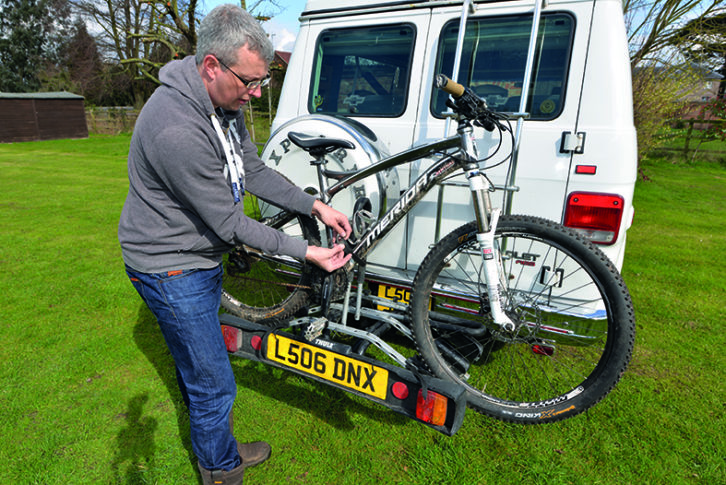
Straps for securing cars tend to fit around the tyres and are best used on all four wheels. Look for straps that have no metal D-rings around the wheels – these can flap about and damage the paintwork on alloys. Soft strapping is preferable. Some trailers – such as Brian James ones – have straps built into the trailer, and these can make loading faster.
With all trailers, make sure you carry a suitable sized socket set to remove the wheel nuts, and that your vehicle jack fits the trailer – most trailers are not supplied with wheel-changing kit.
Check tyres and their pressures before any trip and replace them every five years or so, especially if they are stored outside.
A-frames
An A-frame is essentially the nose-section of the trailer, which can be temporarily attached to the front structure of a car to allow it to be towed.
Often the car needs to have extra brackets drilled into its crash structure to fit an additional mounting point. The advantage is that you don’t have the weight of a trailer to tow, and A-frames take up less storage space (many fold and can be stored in the car’s boot) and are easier to attach to the ‘van.
Endless magazine features have been dedicated to A-frames and their legality, but the Government has been pretty clear on this. According to gov.uk: “When an A-frame is attached to a vehicle… we consider the A-frame and vehicle temporarily become a single unit. When towed by another motor vehicle (eg motorhome) we believe that this single unit is, for the purposes of its construction, treated in GB legislation as a trailer.”
This means the combination of car and A-frame must meet UK trailer law in terms of construction and use (that is, the brakes have to work and it must have rear lighting, an illuminated numberplate and reflective triangles). The key thing to note is ‘UK’.
Elsewhere in Europe, post-Brexit, A-frames are subject to local law. As the Government states:
“We would not recommend the use of A-frames outside the UK without some investigation of the rules that apply in the relevant country.”
Most A-frame manufacturers supply paperwork indicating the CE compliance of A-frames in various languages, and these might help with European police – or might not. It is not uncommon for them to fine you on the spot, leaving you the headache of chasing a refund when you return home. In Europe, a trailer is the safety option.
While A-frames are more convenient to use than trailers, they are not without drawbacks: the car has to be modified with extra brackets in the bumper, and additional systems to allow the brakes to work. Equally, not all vehicles are suitable to be flat-towed (such as electric cars and main automatic/semi-automatic vehicles). While the car is towed, the bearings in the wheels and gearbox, together with the axles and wheels, are rotating and subject to wear. Trailer tyres are far cheaper than car tyres.
A-frames and trailers with brakes
One internet myth still circulating is that if you tow a car on an A-frame under 750kg, it doesn’t need to have working brakes. This is wrong.
The law on this changed years ago and is simple: if your trailer (or car and A-frame combination) has brakes fitted, they must work actively when the motorhome is braking. So even if you have a box trailer that only weighs 300kg, if it has brakes fitted, they must work with the motorhome.
It’s the same for lightweight cars: even if you’re towing a 500kg Caterham or a microcar on an A-frame, it must have working brakes. The weight limit ceases to be relevant if the trailer/A-frame and car have brakes fitted.
DIY or professional fitting?
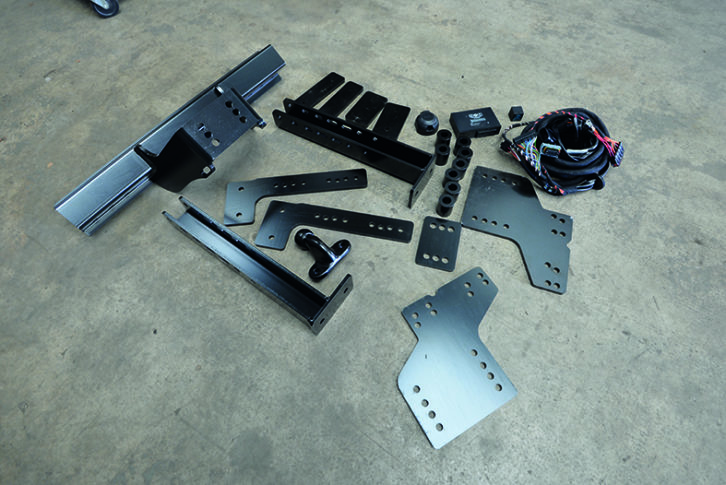
Normally I’d advocate DIY fitting for most items, bot not for towbars. Not only are they massively heavy, but their steel framework makes them even heavier and they’re often a two- or even a three-person lift. Equally, modern wiring looms can be very complicated and are not something that should be tackled on a DIY basis.
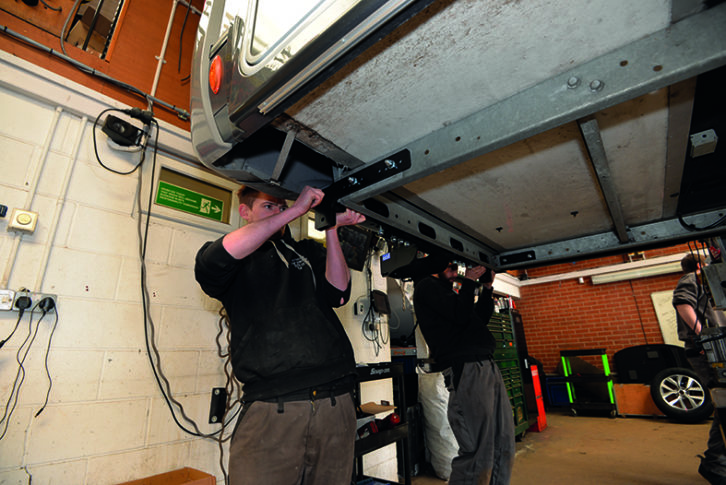
Some of the more sophisticated wiring looms can even integrate with the vehicle’s stability control system, so there’s much more to the wiring than simply making the trailer’s lights work.
If your manufacturer offers a factory-fitted towbar option, always go for that – it will best integrate with the ‘van and will be type-approved. If you already own the vehicle, speak to your dealer and see which installers they recommend.
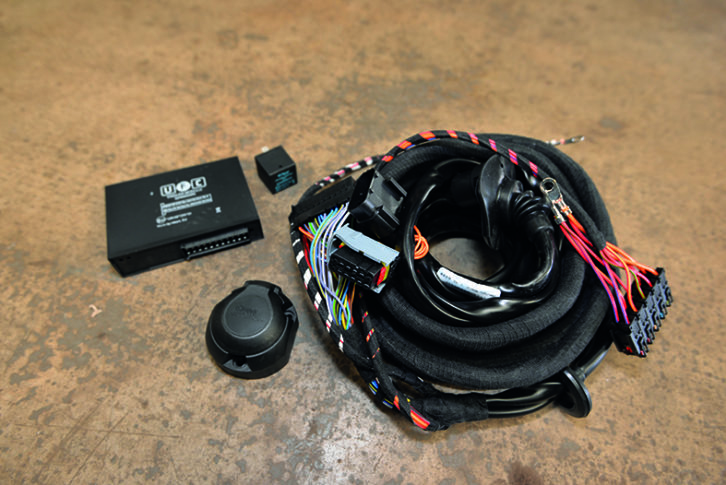
If there is a dedicated vehicle-specific wiring loom available, go for that – it costs more but will be far more reliable in the long run. It could also be quicker to install, saving labour tine.
The tow hitch itself can come in several different designs, from swan-neck types that curve neatly up from the back panel, to the more common two-bolt towball types.
You can also get detachable types, where the tow hitch can be removed when not in use. This saves you banging your shins on the towball and gives a neater look to the rear of the vehicle when they are not in use. The downside to removable towballs is that they’re more expensive and do need a little maintenance – if you leave them attached for long periods, they can corrode in place. Equally, their towbar socket must be covered when not in use, so it doesn’t rust and make the towball difficult to fit.
A regular two-bolt towball is the most common type of towbar and the best option for most ‘vans, because there are so many racks and storage boxes that can be attached.
Carrying racks and noseweights
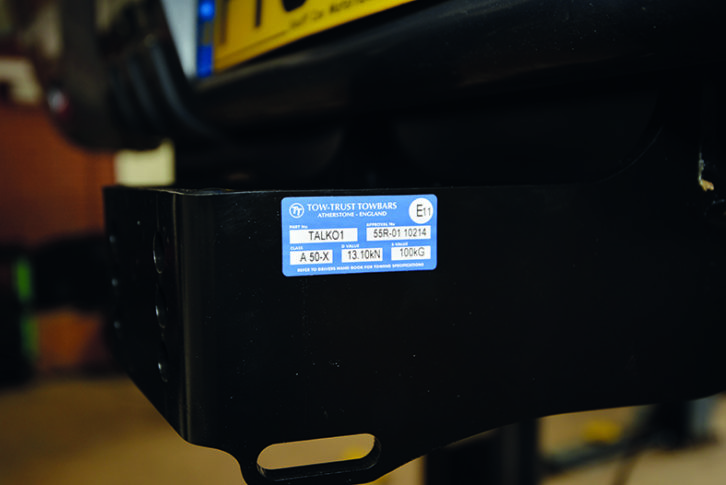
There are two types of carrying rack: those that bolt to the towbar bar assembly and don’t touch the ground, and those that use wheels or dolly wheels to partially support the load. The latter are classed as a trailer and subject to the usual laws, while the former are subject to the tow hitch nose weight.
No matter what you have attached to the towbar assembly – rack or trailer – it is always subject to the nose weight limit of the towbar and framing.
The nose weight is the vertical load exerted downwards on the towball. This is detailed by the towbar maker or the motorhome manufacturer. Whichever weight is the lowest is the maximum vertical load you can place on the tow hitch.
This is typically between 100kg and 150kg for a motorhome, but could be lower on some smaller campervans, so you always need to check this out before you invest in any towing equipment.
With racks that don’t touch the ground, it’s important to know the weights of everything on the rack. Typically a bike rack will have a maximum weight limit of 60kg, usually ample for a couple of ebikes, but you also have to factor in the weight of the rack itself (generally around 20kg), the numberplate and any straps, chains or locks you’ve added. If you only have a low nose weight of 80kg, it’s easy to exceed it. So it’s important to weigh anything you intend to attach to the nose weight – you can use a set of bathroom scales for this.
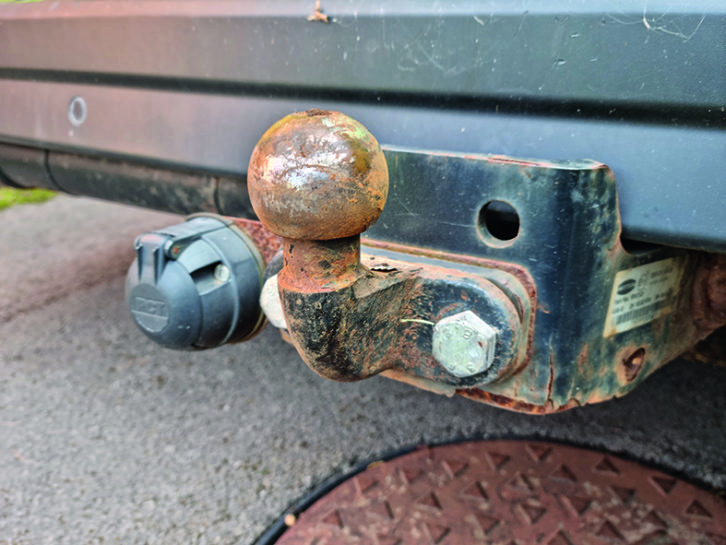
The key point to make about racks attached to the towbar frame is that whatever is loaded on them – together with the weight of the towbar assembly itself – must be subtracted from your available payload. Vehicles with a long rear overhang might have an issue: the longer the overhang, the greater the cantilever effect on the rear axle.
With a trailer, you’ll need to use a nose weight gauge to weigh the vertical load pressing down on the towball by the trailer hitch. There are available online for around £30.
With trailers, nose weight is less of a problem, because you can easily move the load around on the trailer so it exerts less downward force on the hitch. This can be done by moving the kit around in a box trailer, moving a vehicle rearwards on the trailer, or simply removing some gear from the front of the trailer. But generally, it just involves a bit of rearranging of the load.
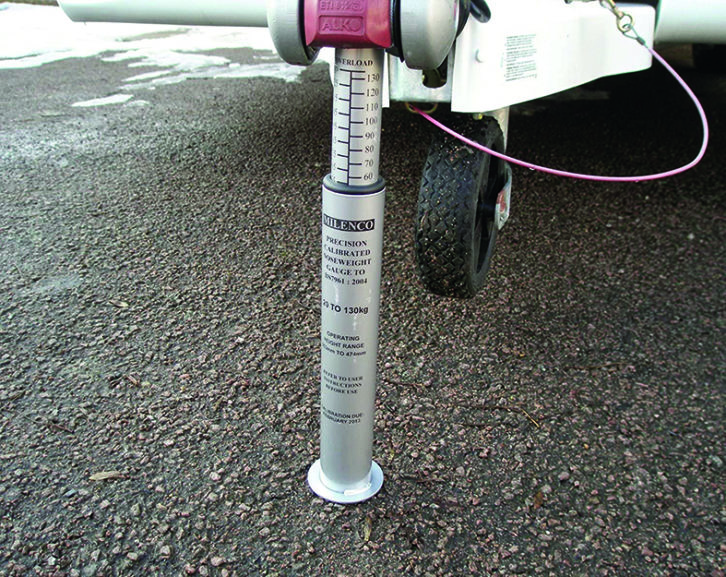
You can generally tell if the load isn’t balanced well if the trailer is dipping down heavily at the front, or the motorhome’s rear suspension is heavily compressed. If moving the trailer’s weight around doesn’t alter this, your ‘van’s rear suspension might need looking at – it could have worn rear springs. You can also have extra airbag rear suspension fitted to cope better with towing – this is an upgrade that works well on most motorhomes.
Towing speed limits
When towing cars, vans and motorhomes are restricted to 50mph on single carriageways and 60mph on dual carriageways and motorways. In built-up areas, the speed limit is usually 30mph, but some councils set 20mph limits around schools.
Numberplates
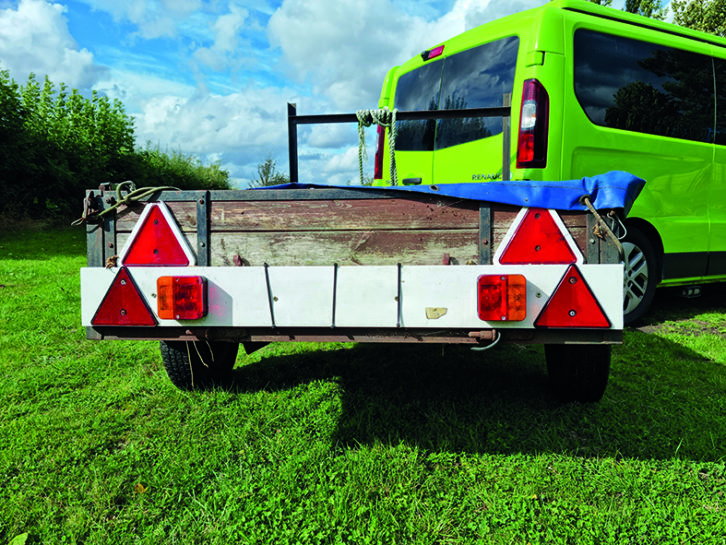
With all towbar-mounted racks and trailers, you need to display your motorhome’s numberplate to the rear. Motor factors, motorhome dealers and Halfords can make up a new rear numberplate for you, but you will need to take in your vehicles V5C for them to do so.
Trailers must display reflective triangles on the rear edges and this also applies to cars being towed on an A-frame (the combination of car and A-frame is legally viewed as a trailer) – the easiest thing to do is to add a rear trailer lighting board.
Training and practice
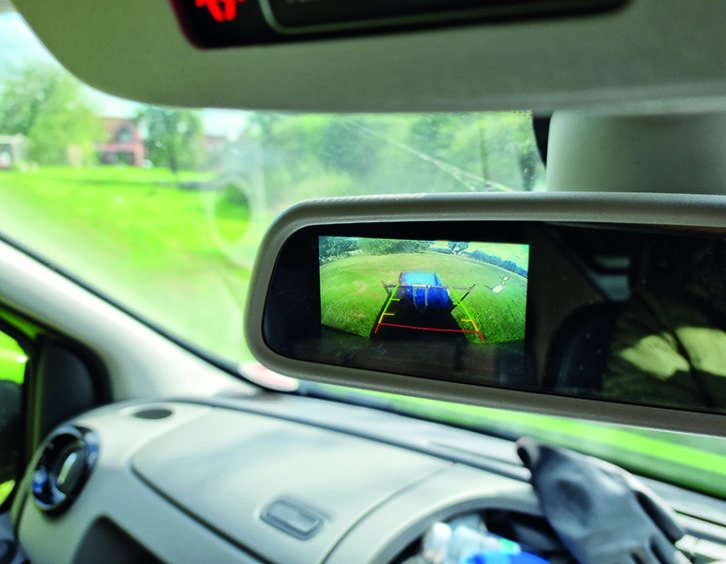
There’s always a first time to tow a trailer and it’s wise to have some independent training or tuition from somebody more experienced in towing, before you head off on holiday. Ideally, you would want to practise in a wide, empty space.
Reversing cameras and large mirrors are essential for towing and well worth investing in.
Most trailers are easy to tow when you’re driving forward and, so long as you allow more room when cornering, it’s not difficult to adapt your driving to them. Car trailers are generally the heaviest and you need to allow extra distance when braking to a stop.
Motorhomes generally tow well and are rarely troubled by the trailer ‘wagging the dog’. However, taller box trailers must be driven with care and you need to be mindful of crosswinds, especially passing trucks or driving over bridges. With all trailers, don’t change direction violently at speed – always change lanes smoothly to avoid upsetting the load.
Reversing is tricky with all trailers, especially with cars on A-frames. Car trailers tend to be the longest and the easiest to reverse, because they change direction slowly and you can easily see them in your mirrors. The shorter the trailer, the harder it is to reverse, and small box trailers are incredibly easy to jack-knife in reverse. The shorter the trailer, the more vital a reversing camera becomes.
You’ll also find that reversing sensors don’t work with trailers – some modern vehicles have a defeat switch to avoid this irritant, but many do not.
With a tow car on a trailer, your best bet is to simply unhitch it when you get to the campsite and drive it to wherever you need it.
Verdict
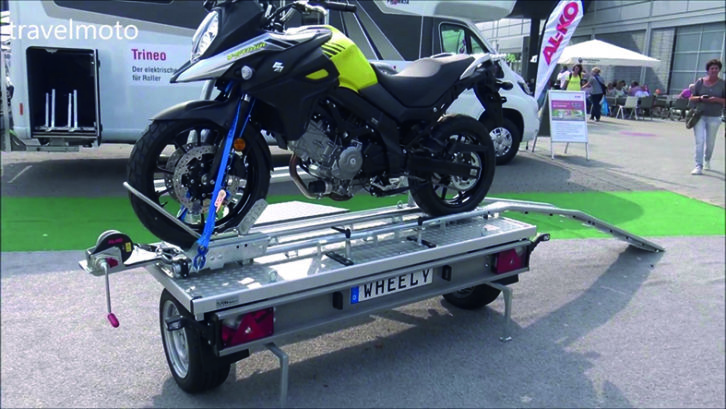
Towbars, trailers, A-frames and racks are great ways to take more toys with you and can make life easier when you pitch up. Thanks to the easing of towing tests, it’s simpler than ever to hitch something to your motorhome. Just make sure you’re fully aware of the type of toward you need and which carrying system best suits your requirements.
Further information
- www.gov.uk/driving-licence-categories
- www.gov.uk/driving-licence-codes
If you liked this… READ THESE:
If you’ve enjoyed reading this article, why not get the latest news, reviews and features delivered direct to your door or inbox every month. Take advantage of our brilliant Practical Motorhome magazine SUBSCRIBERS’ OFFER and SIGN UP TO OUR NEWSLETTER for regular weekly updates on all things motorhome related.
Future Publishing Limited, the publisher of practicalcaravan.com, provides the information in this article in good faith and makes no representation as to its completeness or accuracy. Individuals carrying out the instructions do so at their own risk and must exercise their independent judgement in determining the appropriateness of the advice to their circumstances. Individuals should take appropriate safety precautions and be aware of the risk of electrocution when dealing with electrical products. To the fullest extent permitted by law, neither Future nor its employees or agents shall have any liability in connection with the use of this information. You should check that any van warranty will not be affected before proceeding with DIY projects.
There's always a first time to tow a trailer and it's wise to have some independent training or tuition from somebody more experienced in towing
